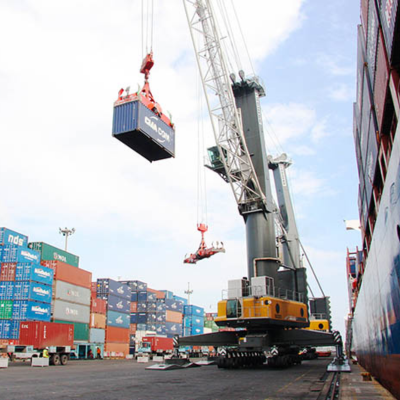Port and Freight Terminal Machinery Automation
Industrial Direct India drives and control systems for port and freight applications are compact and flexible, offering the power and control to move materials efficiently and safely.
Port and freight terminal machinery automation involves automating key processes such as cargo loading, unloading, stacking, and transportation using advanced control systems and intelligent machinery. Automated equipment like gantry cranes, container stackers, and automated guided vehicles (AGVs) work seamlessly to improve efficiency and reduce human intervention.
Key Technologies in Port and Freight Terminal Automation
Automated Gantry Cranes
Gantry cranes equipped with robotics and AI handle container loading and unloading with precision and speed.
Autonomous Guided Vehicles (AGVs)
These vehicles transport cargo within terminals autonomously, reducing the need for manual intervention.
IoT and Sensor Networks
IoT devices provide real-time data on cargo status, machinery performance, and terminal conditions for optimal operations.
Digital Twin Technology
Digital twins simulate terminal operations, enabling real-time analysis and optimization of workflows.
Applications of Automation in Port and Freight Terminals
Port Traffic Management
Optimizing vessel and vehicle movement to reduce cong
Warehouse Automation
Streamlining storage and retrieval processes with automated systems.
Vehicle Loading and Unloading
Automating the transfer of goods between ships, trucks, and trains.
Cargo Tracking
Using IoT and RFID technology for real-time tracking and inventory management.
Container Handling
Automating cranes, stackers, and conveyors for efficient container movement.
Benefits of Automation in Port and Freight Terminals

Real-Time Monitoring
IoT-enabled devices provide live data on cargo movement, equipment performance, and environmental conditions, enabling better decision-making.
Enhanced Accuracy
Automation reduces errors in cargo tracking, placement, and scheduling, ensuring precise and reliable operations.
Cost Efficiency
Automation lowers operational costs by optimizing energy use, reducing labor dependency, and minimizing equipment wear and tear.
Improved Safety
By automating hazardous tasks, the risk of accidents and injuries is significantly reduced.
Increased Productivity
Automated systems enable faster handling of cargo, reducing turnaround times and increasing throughput.
FAQ
How does automation enhance safety in ports and freight terminals?
Automation reduces the need for human involvement in hazardous tasks like heavy lifting and container handling. Technologies such as robotics, advanced sensors, and AI-powered monitoring systems ensure safe operations by detecting potential risks and preventing accidents.
What are the environmental benefits of automating port operations?
Automated systems are designed to optimize energy usage, reduce emissions, and minimize waste, contributing to greener port operations. Automation supports global sustainability goals and aligns with eco-friendly port initiatives.

